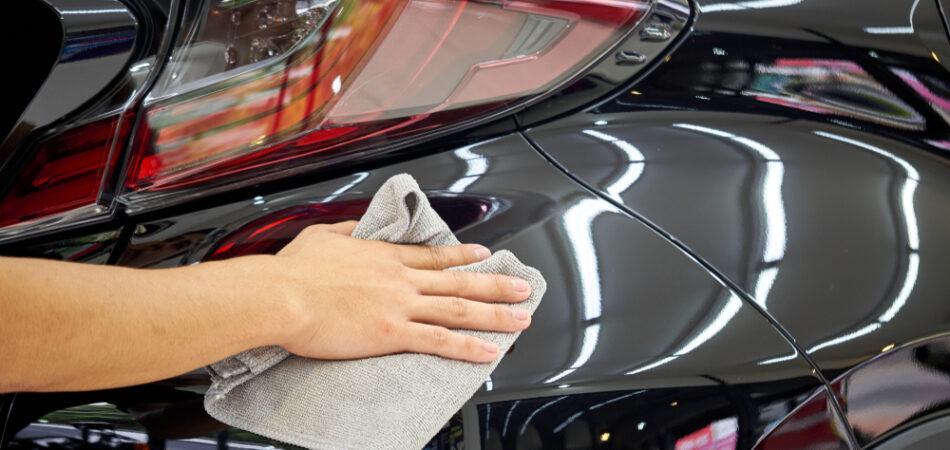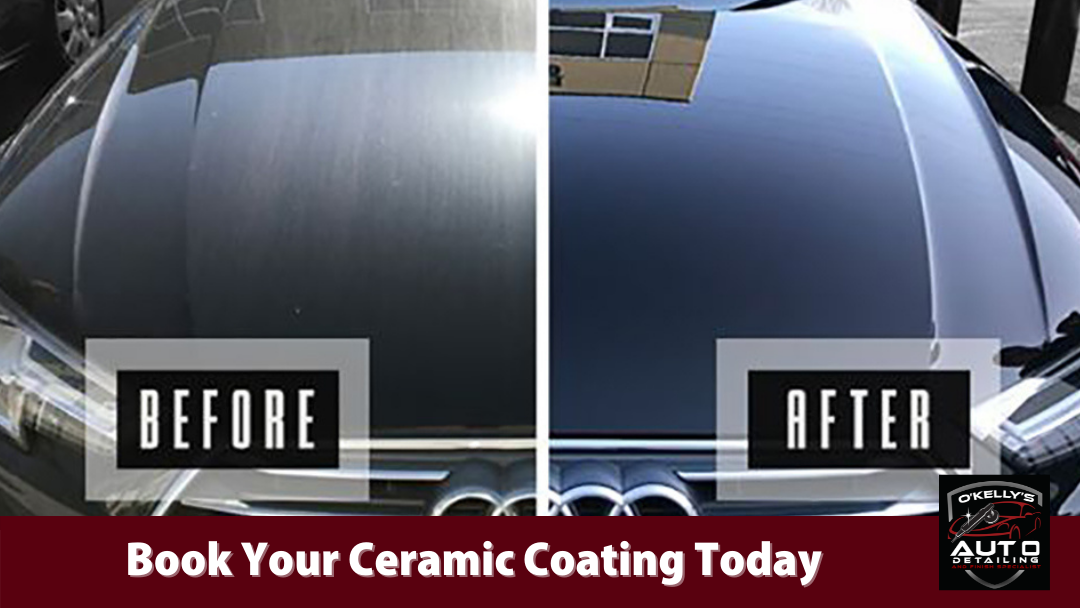Ceramic Coating vs Traditional Wax: Which Offers Better Protection?
Ceramic Coating vs Traditional Wax: Which Offers Better Protection?
Blog Article
Ceramic Covering vs. Traditional Wax: Which Provides Much Better Long-Term Security?
The debate between ceramic coatings and traditional wax for vehicle defense has garnered significant focus among vehicle enthusiasts and experts alike. Ceramic finishings flaunt exceptional durability and resistance to environmental aspects, yet the intricacy of their application increases concerns about access and functionality.
Overview of Ceramic Coating
Ceramic layer has actually acquired considerable appeal among automotive enthusiasts and detailers alike due to its sophisticated safety high qualities. This ingenious modern technology is developed to produce a durable, hydrophobic guard over a car's paint surface, dramatically improving its resistance to environmental pollutants such as dirt, UV rays, and chemical discolorations. Unlike traditional wax, which provides a temporary layer of protection, ceramic finishes bond at a molecular level with the paint, using lasting longevity-- often prolonging beyond 2 years with correct upkeep.
The application process includes meticulous preparation of the vehicle's surface, consisting of cleansing and brightening to ensure optimal attachment. Once applied, the coating treatments to create a durable layer that not only adds depth and gloss to the paint but likewise streamlines upkeep. With its hydrophobic homes, ceramic finish allows water and dirt to move off even more conveniently, reducing the frequency of laundries and minimizing the threat of swirl marks.
In addition, ceramic coverings are readily available in numerous formulas, permitting individuals to select items customized to their certain demands and choices. Generally, ceramic finish stands for a significant improvement in paint security modern technology, supplying superior performance compared to conventional alternatives.
Overview of Traditional Wax
Commonly considered a staple in vehicle treatment, wax acts as a popular choice for those looking for a simple method to enhance and secure their car's paint - ceramic coating. Automotive wax normally consists of all-natural ingredients, such as carnauba, or artificial substances, created to develop a protective layer on the surface of the paint. This layer not only improves the vehicle's gloss and shine but likewise supplies a barrier versus ecological pollutants
The application of wax is generally easy to use, making it easily accessible for both experts and Do it yourself enthusiasts. Once applied, wax needs a healing period, after which it hardens to form a safety covering.
However, while wax is effective for boosting the aesthetic appeal of a car, it is essential to note that the defense it provides may demand more frequent reapplication compared to alternate products, such as ceramic coatings. Generally, typical wax remains a favored option for those prioritizing simplicity of use and instant aesthetic enhancement.
Longevity and Longevity Comparison
While both ceramic coverings and standard wax offer protective benefits for automobile paint, their toughness and long life vary dramatically. Typical wax, typically made from natural carnauba or artificial polymers, usually provides a safety layer that lasts around 3 to 6 months. This reasonably brief life expectancy requires routine reapplication to maintain ideal security.
On the other hand, ceramic finishings are engineered from advanced nanotechnology, forming a covalent bond with the paint surface area. This causes a robust, hydrophobic layer that can endure for 2 to 5 years, depending upon the product and ecological problems. The exceptional sturdiness of ceramic finishings is associated to their chemical structure, which offers boosted resistance to scrapes, UV rays, and oxidation.

Protection Versus Environmental Variables
Securing a basics vehicle's paint from environmental variables is vital for maintaining its look and worth in time. Cars are constantly subjected to a selection of elements, including UV rays, bird droppings, tree sap, acid rainfall, and roadway grime, all of which can endanger the integrity of the paintwork.
Ceramic finishings provide a robust defense versus these ecological assailants. Unlike conventional wax, which can weaken quickly under UV exposure, ceramic finishes create a durable, hydrophobic layer that withstands the dangerous results of sunlight and toxic wastes. This innovative technology produces a chemical bond with the automobile's surface area, offering exceptional security that lasts for many years, also in extreme problems.
Traditional wax, while easier to apply, usually needs constant reapplication and offers limited resistance to impurities and UV rays. In time, it can break down, leaving the paint susceptible to scratches and oxidation. On the other hand, ceramic finishings preserve their protective high qualities longer, considerably decreasing the risk of paint damage and making certain that the automobile preserves its aesthetic charm. Because of this, ceramic view publisher site layers are progressively recognized as the premium selection for long-lasting security versus ecological aspects.
Application and Upkeep Differences
The approaches of application and subsequent upkeep for ceramic finishings and traditional wax differ significantly, affecting the total individual experience and performance of each product. Ceramic finishes require a more detailed application process, normally entailing surface preparation that includes cleaning, decontaminating, and polishing the lorry. Once the surface is prepared, the ceramic coating is applied in a controlled setting, often needing expert experience to ensure appropriate treating and bonding to the paint.

While both items boost lorry look, the longer-lasting protection offered by ceramic coverings may justify their initial investment, in spite of the more demanding application process. Conversely, conventional wax remains a popular option for those seeking an easier, albeit temporary, remedy.

Verdict
In final thought, ceramic layers demonstrate substantial benefits over traditional wax in regards to durability and environmental protection. With a lifespan expanding 2 to 5 years and remarkable resistance to UV rays, dirt, and chemical stains, ceramic finishings provide a more effective option for long-term automobile maintenance. The application procedure may require specialist competence, the resulting expense financial savings and lowered frequency of reapplication underscore the worth of ceramic finishes for those seeking optimum car protection.
The dispute between ceramic coatings and typical wax for lorry security has amassed substantial interest amongst auto lovers and specialists alike. Unlike standard wax, which provides a short-lived layer of security, ceramic layers bond at a molecular degree with the paint, offering durable longevity-- typically extending past 2 years with appropriate upkeep.
While both ceramic coverings and typical wax offer safety advantages for automobile paint, their longevity and longevity vary significantly. Your Domain Name For automobile fanatics seeking long-lasting security, ceramic layers present a compelling benefit over typical wax products.
In conclusion, ceramic finishings show substantial advantages over conventional wax in terms of longevity and environmental protection.
Report this page